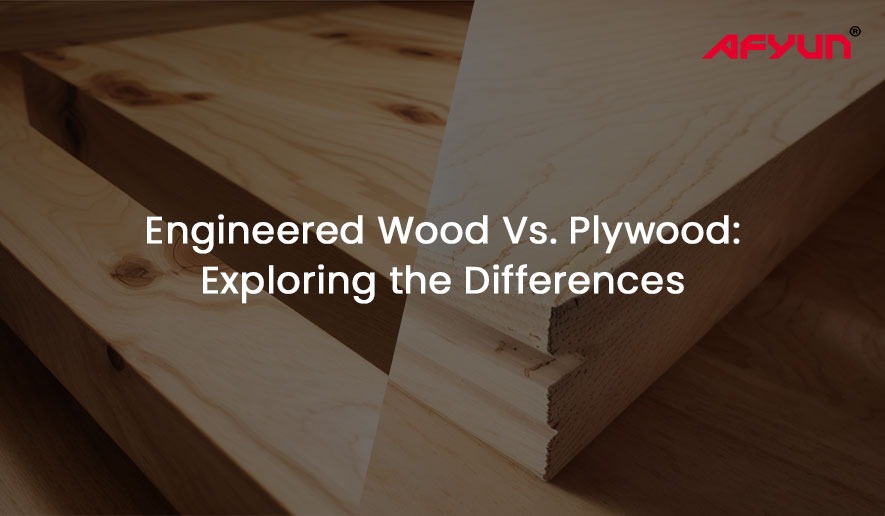When it comes to choosing the right material for your woodworking projects or construction needs, two popular options that often come to mind are engineered wood and plywood.
Both have their unique characteristics and advantages, making them suitable for various applications.
In this blog post, we’ll compare the difference between engineered wood and plywood across various factors to help you make an informed decision.
Engineered Wood Vs. Plywood: The Differences
Let’s break down the key factors, exploring the difference between engineered wood and plywood:
| Factors | Engineered Wood | Plywood |
|---|---|---|
| Raw Material | Made using a combination of wood fibres, sawdust, or wood chips bonded together with adhesives. | Made from layers or plies of thin wood veneers glued together with each adjacent layer. |
| Water Resistance | Less resistant to moisture and water compared to plywood. It may swell or warp when exposed to excessive moisture. | Has superior water resistance, thanks to the use of water-resistant adhesives and the layered construction. |
| Bonding | They use various adhesives, and the quality of bonding can vary depending on the manufacturer. | They have excellent bonding due to the cross-layered construction, resulting in superior strength and stability. |
| Strength | They can be strong and durable, depending on the specific product. | They are known for consistent and high-strength properties, making them ideal for applications where strength is crucial. |
| Durability | They vary in durability, with some being susceptible to damage from moisture or insects. | They are generally durable and can withstand a range of environmental conditions. |
| Cost | They tend to be more affordable than plywood, making it a budget-friendly choice for many projects. | They can be more expensive, but their durability and water resistance may justify the higher cost for certain applications. |
| Applications | Ideal for various applications including furniture, cabinetry, and interior structural elements. | Ideally used inconstruction, furniture, flooring, exterior siding, boat building, and others. |
| Formaldehyde Emission | Some types of engineered wood may emit formaldehyde, a volatile organic compound (VOC). However, low-emission or formaldehyde-free options are available. | Plywood can also contain formaldehyde-based adhesives, but low-emission plywood products meet stricter standards for indoor air quality. |
| Availability | Available in various forms and sizes, making them accessible for most projects. | Readily available and comes in a wide range of grades and sizes to suit different needs. |
| Thickness Options | Available in various thicknesses, allowing for flexibility in design and construction. | Available in different thicknesses, catering to specific structural requirements. |
| Environmental Impact | Considered environmentally friendly when sourced from sustainably managed forests, as it optimizes the use of wood resources. | It has a lower environmental impact when it adheres to sustainable forestry practices and uses eco-friendly adhesives. |
Also read: HDHMR vs Plywood
Conclusion
In the battle of engineered wood vs. plywood, the choice ultimately depends on your specific project requirements. If you need superior water resistance, durability, and consistent strength, plywood may be the better option.
However, if you’re looking for affordability and versatility, engineered wood could be the way to go. Remember to consider the environmental impact, formaldehyde emissions, and the availability of the material in your region when making your decision.
In summary, both engineered wood and plywood have their strengths and weaknesses, so make sure to weigh these factors carefully before selecting the ideal material for your project.
Whether it’s building furniture or constructing a home, the right choice can significantly impact the outcome of your endeavor.










